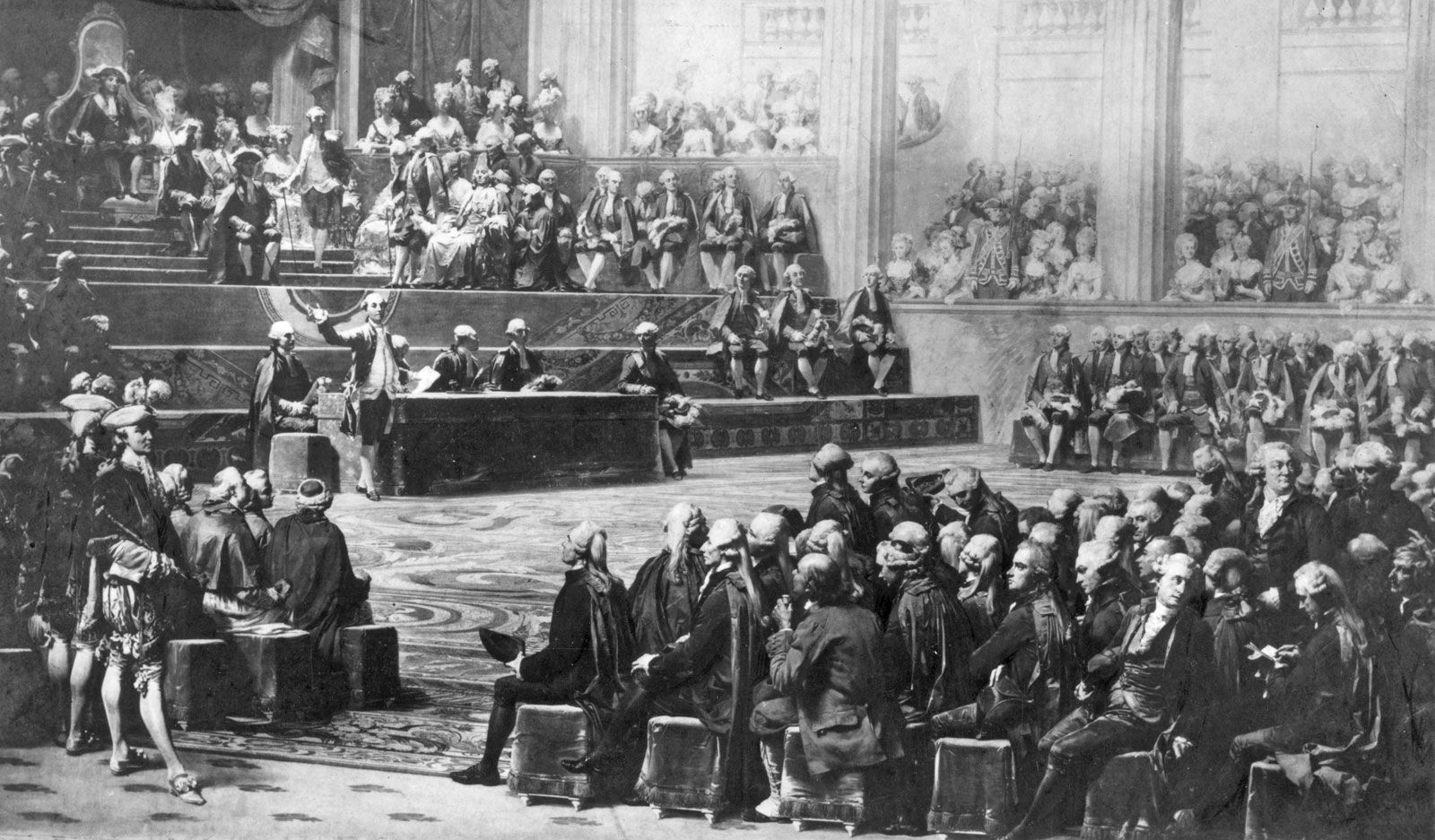The first two estates included only a small fraction of the French nation; over 97 percent of the population fell within the third estate. Most of these commoners were peasants, whose status was in some respects more favorable in France than anywhere else in Europe.
Serfdom, still prevalent in central and eastern Europe, had disappeared almost entirely. While enclosures were gradually pushing small farmers off the land in England, small peasant holdings existed by the millions in France.
Nevertheless, rural misery was widespread. The peasants did not understand the many wars in which France had been engaged, which had led to heavier taxation, but they could see how the nobility and clergy lived lavishly while they themselves existed at the subsistence level.
This was especially so when, faced by rapid population growth, the peasantry had little or no surplus agricultural produce to sell. Although the degree of agrarian distress varied greatly from province to province, the overall picture was bleak. Part of the trouble lay with such economic fundamentals as backward methods of farming, the shortage of land, and overpopulation.
Vast areas were not cultivated at all or lay fallow every second or third year in accordance with medieval practice. Landless peasants drifted to the cities or turned to brigandage, and the constantly increasing rural population simply could not find steady employment or a decent livelihood.
Financially the peasants saw themselves as in decline. Inflation hurt them; most farmers found that the prices of the products they sold rose less swiftly than those of the goods they had to buy. Moreover, the peasants owed a heavy burden of taxes and other obligations—the tithe to the church, feudal and manorial dues to the nobility, and to the state a land tax, an income tax, a poll tax, and other duties, of which the most widely detested was the gabelle, the obligatory payment of a salt tax to financiers who acted as government agents and usually overcharged.
Unemployment and poverty had created a revolutionary temper among the peasants. But they did not demand a change in the form of government. They most emphatically wanted more land, if need be at the expense of the clergy and the nobility; they wanted an end to obsolete manorial dues; and they wanted relief from a system of taxation that bore hardest upon those who could least afford to pay.
The other members of the third estate—the urban workers and the bourgeoisie—were also increasingly alienated. Nearly every major city was faced with discontented wage earners and apprentices who were seriously disadvantaged by the pinch of rising prices. This was especially true of day laborers, who were not allowed to organize unions and who turned to badly led strikes.
Apprentices and journeymen found their way blocked along the normal if slow path to master carpenter, bookbinder, or ribbon weaver, and these groups as well as stocking-frame weavers, journeymen hatters, dyers, and workers in the building trades resorted to strikes.
The working classes, who had seen themselves as divided into distinct groups, were now beginning to think of their problems in common despite their specialized trades or the gap between semiskilled, manual, and technically trained workers. In time this group, known as the sans-culottes (those without knee breeches), were united by a common fear that they could not buy bread and would starve.
However, it was the bourgeoisie that focused these discontents and ultimately provided the leadership. The bourgeoisie included people of varied resources and interests—rich merchants and bankers in the cities, storekeepers and lawyers in country towns and villages, doctors and other professionals, and thousands upon thousands of crafts workers running their own little businesses. The bourgeoisie suffered fewer hardships than the peasants and workers did, but they resented the abuses of the Old Regime perhaps even more keenly.
Though they paid a smaller proportion of their incomes in taxes, they violently denounced the inequality of tax assessments. They found it galling to be snubbed by the nobility, treated as second- class subjects by the monarchy, and excluded from posts of power in government, church, and army.
Wealthier, better-educated, and more articulate than the peasants and wage earners, the middle class at first took the lead in formulating the grievances of the entire third estate. These grievances were compiled in statements called cahiers and were submitted to the Estates General in 1789.

